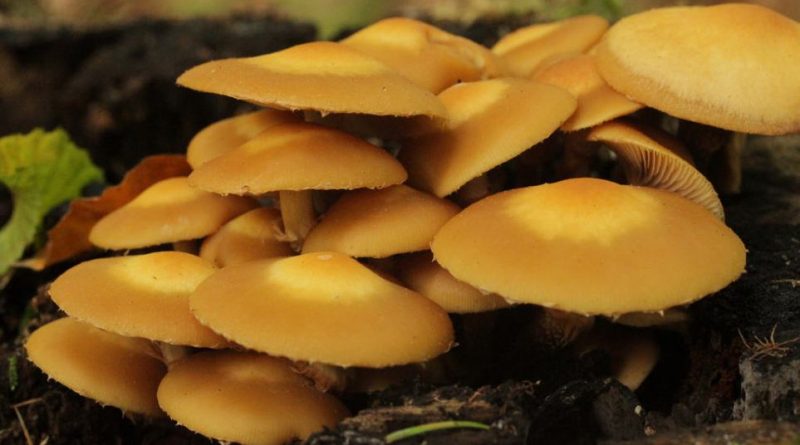Kuehneromyces mutabilis
Kuehneromyces mutabilis
The Broche (Kuehneromyces mutabilis (Schaeff.) Singer & A.H. Smith) is a saprophyte basidiomycetes mushroom belonging to the Strophariaceae family.
Systematic –
From the point of systematic cysts this fungus belongs to the Eukaryota Domain, Kingdom Fungi, Basidiomycota Division, Subdivision Agaricomycotina, Class Agaricomycetes, Order Agaricales, Family Strophariaceae and then to the Genus Kuehneromyces and to the species K. Mutabilis.
The term is synonymous more customary: Pholiota mutabilis.
Etymology –
The term Kuehneromyces was dedicated to Robert Kühner (1904-1997), and with the addition of the word myces from the Greek μύκης mýces fungo: genus of mushrooms dedicated to Kühner. The epithet sepcifico mutabilis has been attributed because this fungus changes color when the humidity changes.
Geographic Distribution and Habitat –
The Kuehneromyces mutabilis is a fungus that grows in tufts also extended on dead trunks and in the process of decay and hardwood stumps; fruit in the period between spring and winter.
Recognition –
This mushroom is recognized for the convex hat, then expanded and usually umbonate, smooth, with iridescent shades depending on humidity and brownish-yellowish, pale with age and dry; the margin is thin and sinuous, the lamellae are attached, dense, light ocher, then brownish-yellow. The stem is rather firm and tenacious, whitish at the apex, yellowish-brown at the bottom, covered by small scales under the ring which is membranous, fleeting, concoloured to the stem. The flesh is whitish in color, with brownish nuances, with a markedly fungal smell (but not with flour) and a pleasant taste. Under the microscope, ovoid or slightly almond spores of dark ocher-dark color are noted.
Cultivation –
Kuehneromyces mutabilis is a fungus that lends itself to growing on substrates similar to those on which it grows naturally.
Uses and Traditions –
It is a good edible fungus, but we must pay the utmost attention as it can be confused, especially by the less experienced, with the mortal Galerina marginata that grows in the same habitat. In fact, we must be certain that we can recognize all the distinctive features that distinguish it. Galerina marginata differs, however, due to the farinaceous smell and to the medium-smaller size and the average slimmer stem.
Another resemblance, but obviously not fatal, is with the Armillaria mellea, from which it is easily distinguished by its smooth hat, hygrophanous, scaly stem under the ring and by the color of the lamellae and spores.
Preparation Mode –
Probably, even the broche can be prepared like other edible mushrooms, ie well cooked and seasoned with parsley, oil, salt and garlic but, for its possible and fatal confusions, it is strongly discouraged any approach in the kitchen and consumption.
Guido Bissanti
Sources
– Wikipedia, the free encyclopedia.
– Cetto B., 2008. Real mushrooms, Saturnia, Trento.
– Pignatti S., 1982. Flora d’Italia, Edagricole, Bologna.
– Conti F., Abbate G., Alessandrini A., Blasi C. (edited by), 2005. An annotated checklist of the Italian vascular flora, Palombi Editore.
Warning: Pharmaceutical applications and alimurgical uses are indicated for informational purposes only and do not in any way represent a medical prescription; there is therefore no liability for their use for curative, aesthetic or food purposes.


